Potřebujeme váš souhlas k využití jednotlivých dat, aby se vám mimo jiné mohly ukazovat informace týkající se vašich zájmů. Souhlas udělíte kliknutím na tlačítko „OK“.
ASTM F1801-97(2014)
Standard Practice for Corrosion Fatigue Testing of Metallic Implant Materials
Automaticky přeložený název:
Standardní praktiky pro koroze únavové zkoušky kovové implantáty
NORMA vydána dne 1.10.2014
Informace o normě:
Označení normy: ASTM F1801-97(2014)
Poznámka: NEPLATNÁ
Datum vydání normy: 1.10.2014
Kód zboží: NS-51621
Počet stran: 7
Přibližná hmotnost: 21 g (0.05 liber)
Země: Americká technická norma
Kategorie: Technické normy ASTM
Kategorie - podobné normy:
Anotace textu normy ASTM F1801-97(2014) :
Keywords:
corrosion fatigue, metallic implant materials, physiological environment,, ICS Number Code 11.040.40 (Implants for surgery, prothetics and orthotics)
Doplňující informace
| Significance and Use | ||||||||||||||||||||||
|
4.1 Implants, particularly orthopedic devices, are usually exposed to dynamic forces. Thus, implant materials must have high fatigue resistance in the physiological environment. 4.1.1 This practice provides a procedure for fatigue testing in a simulated physiological environment. Axial tension-tension fatigue tests in an environmental test chamber are recommended as a standard procedure. The axial fatigue loading shall comply with Practice E466 and Practice E467. 4.1.1.1 Bending and rotating bending beam fatigue tests or torsion tests may be performed in a similar environmental cell. 4.1.2 This practice is intended to assess the fatigue and corrosion fatigue properties of materials that are employed or projected to be employed for implants. This practice is suitable for studying the effects of different material treatments and surface conditions on the fatigue behavior of implant materials. The loading mode of the actual implants may be different from that of this practice. Determining the fatigue behavior of implants and implant components may require separate tests that consider the specific design and loading mode. 4.1.3 As a substitute for body fluid, 0.9 % saline solution is recommended as a standard environment. One of the various Ringer's solutions or another substitute for body fluid may also be suitable for particular tests. However, these various solutions may not give equal fatigue endurance results. The chloride ions are the most critical constituent in these solutions for initiating corrosion fatigue. 4.1.4 Because implants are manufactured from highly corrosion-resistant materials, no visible corrosion may be detectable by optical or electron-optical (SEM) means. Only a decrease of fatigue strength in the high cyclic life range may be noticeable. Therefore, S-N curves covering a broad fatigue loading range should be generated in 0.9 % saline solution (Ringer's solutions) and air. Comparison of fatigue curves generated in air and saline solution may be the only way to assess the effect of the saline environment. 4.1.5 Where the fatigue behavior of a material system is already established, it may suffice to test modifications of the material properties or surface condition in only a selected stress range. 4.1.6 The recommended loading frequency of one hertz corresponds to the frequency of weight-bearing during walking. For screening tests, higher test frequencies may be used; but it must be realized that higher frequencies may affect the results. 4.1.7 Summary of Standard Conditions—For inter-laboratory comparisons the following conditions are considered as the standard test. Axial tension-tension tests with cylindrical specimens in 37°C 0.9 % saline solution and air under a loading frequency of 1 Hz. |
||||||||||||||||||||||
| 1. Scope | ||||||||||||||||||||||
|
1.1 This practice covers the procedure for performing corrosion fatigue tests to obtain S-N fatigue curves or statistically derived fatigue strength values, or both, for metallic implant materials. This practice describes the testing of axially loaded fatigue specimens subjected to a constant amplitude, periodic forcing function in saline solution at 37°C and in air at room temperature. The environmental test method for implant materials may be adapted to other modes of fatigue loading such as bending or torsion. While this practice is not intended to apply to fatigue tests on implantable components or devices, it does provide guidelines for fatigue tests with standard specimens in an environment related to physiological conditions. 1.2 The values stated in either SI units or inch-pound units are to be regarded separately as standard. The values stated in each system may not be exact equivalents; therefore, each system shall be used independently of the other. Combining values from the two systems may result in non-conformance with the standard. 1.3 This standard does not purport to address all of the safety concerns, if any, associated with its use. It is the responsibility of the user of this standard to establish appropriate safety and health practices and determine the applicability of regulatory limitations prior to use. |
||||||||||||||||||||||
| 2. Referenced Documents | ||||||||||||||||||||||
|
Podobné normy:
Historická
1.12.2012
Historická
1.3.2013
Historická
15.5.2012
Historická
1.10.2014
Historická
15.1.2015
Historická
15.7.2013
Odebírejte informace o nově vydaných normách ZDARMA:
Chcete pravidelně odebírat informace o nově vycházejících normách z celého světa a to zcela zdarma?
Přihlašte se k odběru. Vše je velice jednoduché a absolutně ZDARMA.
Na výběr máte vydavatele z celého světa.


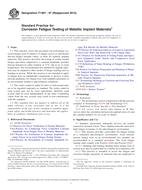
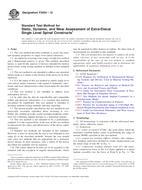 ASTM F2624-12
ASTM F2624-12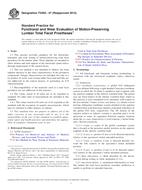 ASTM F2694-07(2013)..
ASTM F2694-07(2013)..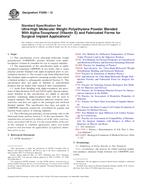 ASTM F2695-12
ASTM F2695-12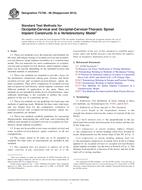 ASTM F2706-08(2014)..
ASTM F2706-08(2014)..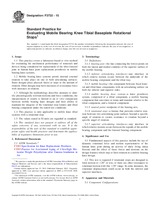 ASTM F2722-15
ASTM F2722-15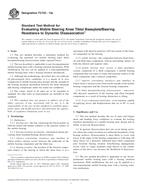 ASTM F2723-13a
ASTM F2723-13a
 Cookies
Cookies
